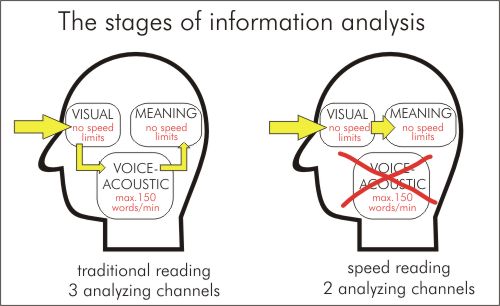
7 speed reading vs eyeq software#
Mobileye already sells a package of hardware and software that can add a Level 4 self-driving mode to cars, but it uses several chips that are too power-hungry for cars suited for consumers. With EyeQ Ultra, it is upping the ante in its battle with Nvidia and Qualcomm to power autonomous cars in the coming decade.

Paired with its cameras, the sensors will help vehicles “see” more of their surroundings. The autonomous driving giant is also developing in-house lidar sensors to complement the radar systems it is also building in-house. Last year, the company announced that it started testing prototypes of self-driving cars in several major cities, including New York. Mobileye has promoted its ADAS systems as a stepping stone for self-driving cars. The company has previously said that it has shipped more than 100 million EyeQ processors to date. There are millions of those systems on the road today.
7 speed reading vs eyeq driver#
For years, it has offered camera-based systems with a package of its hardware and software to auto makers trying to add safety features such as emergency brake assist and lane-departure and blind-spot warnings-also called advanced driver assistance (ADAS) systems-to cars. Intel’s autonomous driving unit has become an early leader in locking down the brains of self-driving cars. Unveiled at CES 2022, the EyeQ Ultra aims to provide enough processing power for what experts call "Level 4" autonomous driving, which means that cars can operate in self-driving mode in most, but not all, situations. This essentially matches what we saw with the Nikon Z9's Stacked sensor, compared with the BSI chip in the Z7 II: a very slight increase in read noise as a result of the fast readout being seen as a reduction in usable dynamic range.At the Consumer Electronics Show, Mobileye revealed the next generation of its flagship system-on-a-chip (SoC), called the EyeQ Ultra, that is purpose-built for cars that can almost completely drive themselves.

With less significant pushes, you can see that the X-H2S matches the X-T4 down as far as a +4EV shadow lift, or a +3EV lift in electronic shutter mode. You can see that t he X-H2S is noticeably noisier than the X-T4 in the very deepest shadows, and noisier again in E-shutter mode.
7 speed reading vs eyeq iso#
It's a similar story if we look at base ISO images underexposed and then brightened (as you might when shooting a high-contrast scene). This noise level increases a fraction if you use the camera's electronic shutter mode, meaning you're probably better off using a higher ISO, rather than sticking to base, to try to protect highlights. It's more than the X-T4 and the difference widens in the darker tones. If we look at a base ISO image, raised up to the level of an ISO 3200 shot with the same exposure, you can see there's a distinct increase in noise. Our dynamic range tests look at the deep shadows of the images, to see whether differences in electronic, read noise are having any impact on the deepest tones the camera can convey. Overall, this is a good result: we were impressed with the X-T3 and 4, so maintaining comparable image quality despite the big speed increase is a creditable result. There's little change in color rendering compared with the X-T4, though again, the optimal exposure fell between 1/60 and 1/50 second exposures for these two cameras, so the X-T4's image is a touch brighter than perfect, while the X-H2S's is a fraction darker. The difference becomes apparent at the very highest ISO settings, but in most circumstances it's not significant.Īs before, high ISO noise reduction is pretty reasonable, doing a decent job of holding on to detail at high ISOs, and not completely smoothing-over low-contrast detail. What's good to see is that there's not too much of a cost to be paid in terms of high ISO performance, in return for the X-H2S' Stacked CMOS speed. Look at the Raw and the difference essentially disappears.


We suspect the small difference in apparent sharpness between the X-H2S and the X-T3 and 4 is primarily down to the fractionally darker exposure giving a hint more contrast to proceedings, perhaps with a minute difference in focus.


 0 kommentar(er)
0 kommentar(er)
